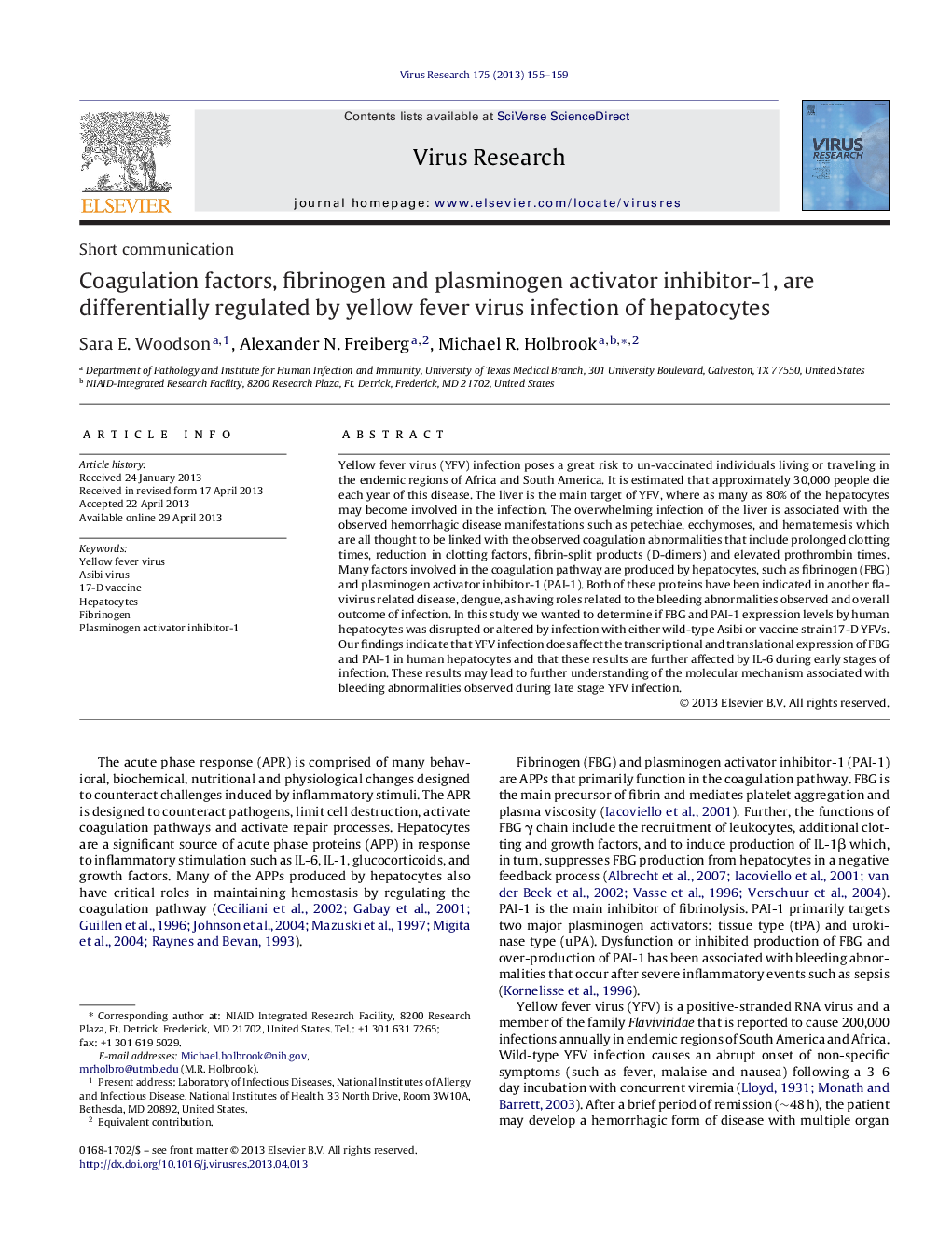| Article ID | Journal | Published Year | Pages | File Type |
|---|---|---|---|---|
| 3428520 | Virus Research | 2013 | 5 Pages |
Yellow fever virus (YFV) infection poses a great risk to un-vaccinated individuals living or traveling in the endemic regions of Africa and South America. It is estimated that approximately 30,000 people die each year of this disease. The liver is the main target of YFV, where as many as 80% of the hepatocytes may become involved in the infection. The overwhelming infection of the liver is associated with the observed hemorrhagic disease manifestations such as petechiae, ecchymoses, and hematemesis which are all thought to be linked with the observed coagulation abnormalities that include prolonged clotting times, reduction in clotting factors, fibrin-split products (D-dimers) and elevated prothrombin times. Many factors involved in the coagulation pathway are produced by hepatocytes, such as fibrinogen (FBG) and plasminogen activator inhibitor-1 (PAI-1). Both of these proteins have been indicated in another flavivirus related disease, dengue, as having roles related to the bleeding abnormalities observed and overall outcome of infection. In this study we wanted to determine if FBG and PAI-1 expression levels by human hepatocytes was disrupted or altered by infection with either wild-type Asibi or vaccine strain17-D YFVs. Our findings indicate that YFV infection does affect the transcriptional and translational expression of FBG and PAI-1 in human hepatocytes and that these results are further affected by IL-6 during early stages of infection. These results may lead to further understanding of the molecular mechanism associated with bleeding abnormalities observed during late stage YFV infection.
